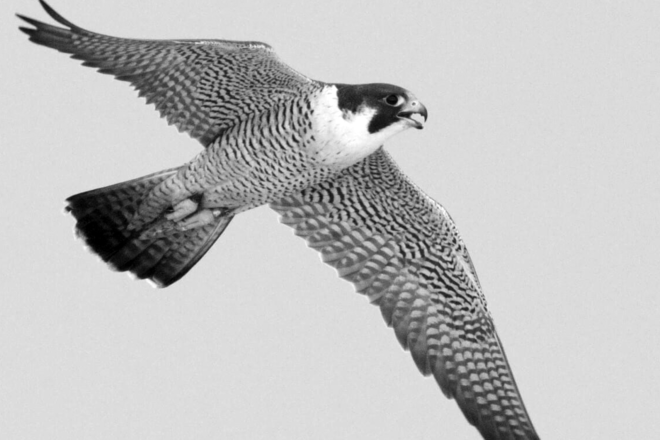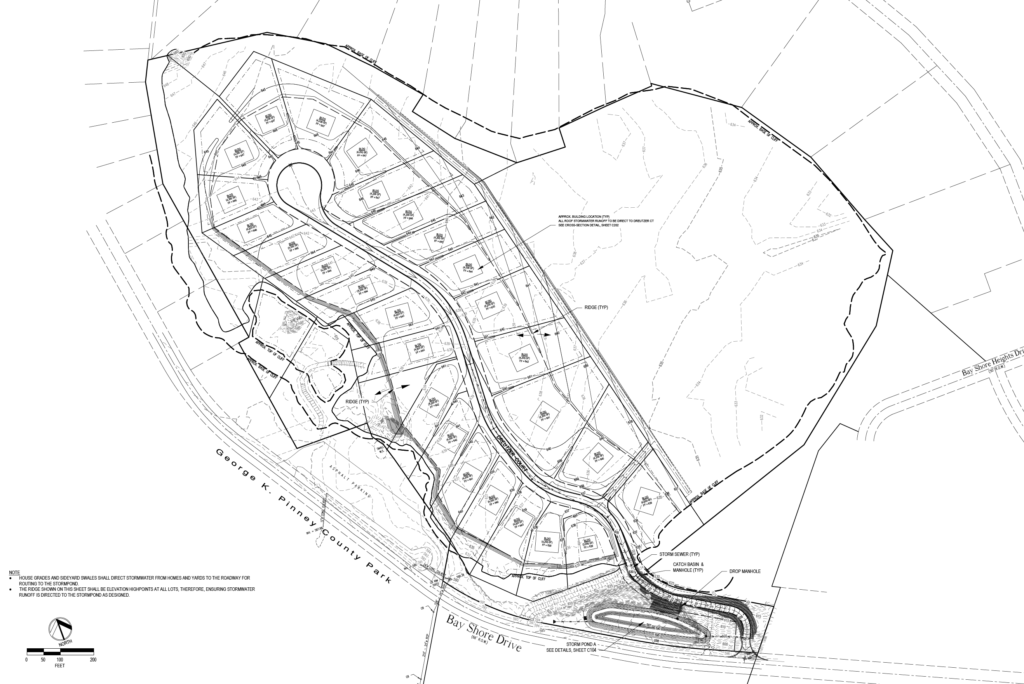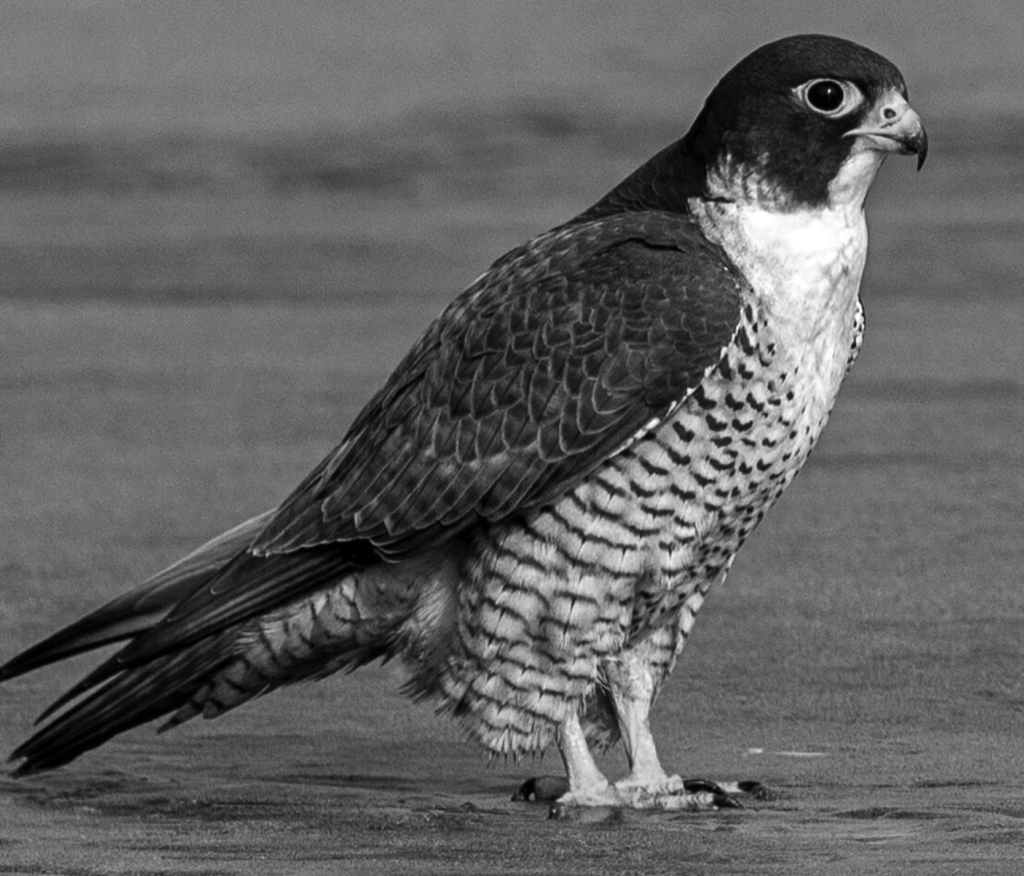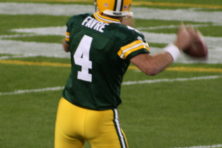Peregrine Falcons Trigger Construction Restrictions
- Share
- Tweet
- Pin
- Share

As was expected with a development that complies with zoning and doesn’t require any special permits, the Quarry Bluff residential development in Sevastopol is essentially a go.
Tom Goelz and Mike Parent, developers and agents for Quarry Bluff Development, LLC, received preliminary plat approval to build 27 residential homes on 57 acres of land owned by the Margaret Dreutzer Trust, of which Peggy Dreutzer Turk is the trustee.
Not as easy will be the construction season once the development gets underway due to the presence of a pair of peregrine falcons that the Wisconsin Department of Natural Resources (DNR) has verified is nesting at the site.
Given that the raptor pair is an endangered species in Wisconsin, the DNR placed a condition on the development that no residential or major construction may take place within a quarter mile of the site during the active nesting period of March 10 – July 10.
Rich Staffen, a zoologist/conservation biologist with the Wisconsin DNR who specializes in birds and raptors, was part of the decision to place the restriction on the development. It’s not that peregrine falcons won’t tolerate human activity – since their slow rise from near extinction, Staffen said, they’ve adapted to cities, including Milwaukee and La Crosse, where they feast on pigeons and nest on tall buildings.
“They’re very tolerant of people,” he said. “Any activity below them is not a big concern. The biggest issue is when there’s activity above their nest.”

Opposition Concedes Loss
Perhaps some of the activity on the new development would be above the falcon pair’s nest. The site is the old Leathem & Smith stone quarry that’s excavated into the bedrock bluff east of Bay Shore Drive across from George K. Pinney County Park in the Town of Sevastopol.
The 27 lots ranging in size from 0.53 to 1.61 acres may only be single-family residences that are a minimum of 1,850 square feet and will be designed according to the Quarry Bluff Owners’ Association that has been established. Almost 20 acres on the eastern side of the site will remain undeveloped.
The Door County Resource Planning Commission (RPC) approved the preliminary plat Aug. 18 by a vote of 3-2 (Ken Fischer, David Enigl and Roy Englebert approved; Hugh Zettel and Morgan Rusnak dissented)
after looking at the conceptual plan June 3. (No official approval was required during that stage.)
All that remains is the final plat review by county staff. If nothing has changed from the preliminary plat, staff will sign off on the plan.
“It’s really just tidying up what they have,” said Mariah Goode, director of Door County Land Use Services.
Opposition to development at the site was present throughout the process from those who believed there was potential for groundwater and surface-water contamination, structural damage to nearby homes and the bluff due to major construction activities, and degradation of the natural resources.
Leading the opposition were the Quarry Neighborhood Action Group (QNAG) and the Bay Shore Property Owners Association (BSPOA).
QNAG began its resistance in 2019 in protest of the 117-unit campground the developers had initially proposed for the site. For that plan, the developers needed a conditional-use permit – something the RPC unanimously denied in March 2020.
The groups renewed their opposition when the developers returned with their scaled-down residential development, which was automatically allowed without special permits. All that was required was approval of the plat, which is the plan on how the land would be subdivided. If the developer complied with the county’s land-division ordinance, there were no statutory grounds for denial that county staff could find.
“We and corporation counsel don’t think the plat, or any plat, could be rejected if they turned in everything they’re supposed to,” Goode said.
QNAG and BSPOA tried to appeal the RPC’s approval of the preliminary plat, but county staff again turned to the statute and found nothing to support the appeal.
“If you read the language there, it clearly envisions the person who would be appealing a plat decision would be the person who got their plat denied, not neighbors who are unhappy about it,” Goode said. “I’m assuming it was set up that way purposely. So we let them know we wouldn’t be processing their appeal.”
Consequently, QNAG and BSPOA felt the county had slammed the door on their efforts to preserve and protect the site.
“It is with anger, disillusionment, sadness and frustration that the Quarry Neighborhood Action Group shares that all efforts to stop development at the Old Stone Quarry have come to an end, and short of civil court, digging, filling, dumping and blasting may commence soon,” said the email that QNAG sent out to its list members and that was forwarded to the Peninsula Pulse by Jim Mitsche, a BSPOA board member.

“They’ve been clocked as the fastest animal on earth when in a dive or stoop – 200 miles mph,” said Rich Staffen, a zoologist/conservation biologist with the Wisconsin Department of Natural Resources who specializes in birds and raptors. “When they’re in that stoop, they’re tucking their wings and in a tuck, [and] can generate that amount of speed. They’re particularly aerodynamic.” Photo source: The Cornell Lab.
At Least Four Pairs of Nesting Falcons in Door County
If someone wants to construct a development, a rare-species check is part of the process.
“That’s what happened here,” said Staffen, who helps to maintain the DNR’s rare-species database.
The peregrine falcons at the quarry site were first spotted in 2021 and again verified this year. A nesting pair was also verified off Rock Island, and two additional pairs on the mainland.
“We think this is the first time they’ve been nesting on the mainland since pre-DDT,” Staffen said.
DDT, a popular insecticide that came into wide use after World War II, was responsible for drastic declines in peregrine falcons. The Environmental Protection Agency banned DDT in 1972, and recovery projects began for the peregrine falcon, already classified as a federally endangered species. Success of those programs allowed the declassification in 1999 of the raptor’s federal status as an endangered species, but certain states such as Wisconsin still list the bird as endangered.
Currently, there are about 44 nesting pairs of peregrine falcons in Wisconsin, Staffen said.
“It’s low, but steadily increasing over the last 30 years,” he said.
The falcon’s short-distance, over-winter commute – they likely go only as far as southern Illinois, Missouri or Arkansas, Staffen said – will begin this month. The birds will return in late winter, and at that time, the DNR could declare the quarry nesting site abandoned or expanded and could change the development restrictions accordingly. The DNR’s endangered-species status review, done every 10 years, is also coming up.
“We will look at the status closely,” Staffen said, “but for the time being, the current status is endangered. I’m pretty sure they’re still rare.”

